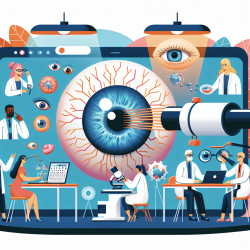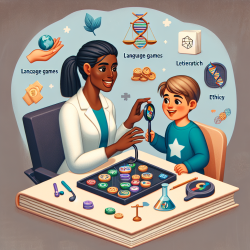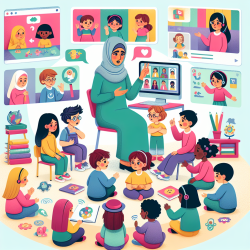Introduction
In the realm of speech-language pathology, data-driven decisions are paramount to achieving optimal outcomes for children. Recent research in retinal dystrophies, specifically the study titled "Assessing Photoreceptor Status in Retinal Dystrophies: From High-Resolution Imaging to Functional Vision," offers insights that can be leveraged to enhance therapeutic practices. This blog explores how practitioners can integrate these findings into their work, fostering improved functional vision and communication skills in children.
Understanding Retinal Dystrophies
Retinal dystrophies are a group of inherited disorders characterized by the progressive degeneration of photoreceptors, leading to vision impairment. The study by Sahel et al. (2021) underscores the importance of high-resolution imaging and functional vision assessment in managing these conditions. By correlating structural changes with functional outcomes, practitioners can gain a comprehensive understanding of the disease's impact on vision and communication.
Integrating Research Findings
The study highlights several key findings that can inform speech-language pathology practices:
- Photoreceptor Assessment: High-resolution imaging techniques, such as optical coherence tomography (OCT), provide detailed insights into photoreceptor status. Understanding these structural changes can help practitioners tailor interventions to address specific visual and communication challenges.
- Functional Vision Evaluation: The study emphasizes the need for functional vision assessments in naturalistic environments. By evaluating how visual impairments affect daily activities, practitioners can design interventions that enhance both vision and communication skills.
- Impact of Novel Therapies: The research explores the effects of gene therapy, such as Luxturna, on functional vision. Speech-language pathologists can collaborate with ophthalmologists to monitor and support children undergoing such treatments, ensuring comprehensive care.
Encouraging Further Research
While the study provides valuable insights, it also highlights the need for ongoing research. Practitioners are encouraged to explore the following areas:
- Longitudinal Studies: Conducting long-term studies to assess the impact of retinal therapies on communication outcomes can provide deeper insights into their efficacy.
- Interdisciplinary Collaboration: Collaborating with ophthalmologists, educators, and researchers can enhance the understanding of how visual impairments affect communication and learning.
- Innovative Interventions: Developing and testing novel interventions that integrate visual and communication therapies can lead to more holistic approaches in speech-language pathology.
Conclusion
Integrating findings from retinal dystrophy research into speech-language pathology practices can significantly enhance outcomes for children. By understanding the structural and functional aspects of vision, practitioners can design targeted interventions that address both visual and communication challenges. As the field continues to evolve, ongoing research and interdisciplinary collaboration will be crucial in advancing our understanding and treatment of these complex conditions.
To read the original research paper, please follow this link: Assessing Photoreceptor Status in Retinal Dystrophies: From High-Resolution Imaging to Functional Vision.










